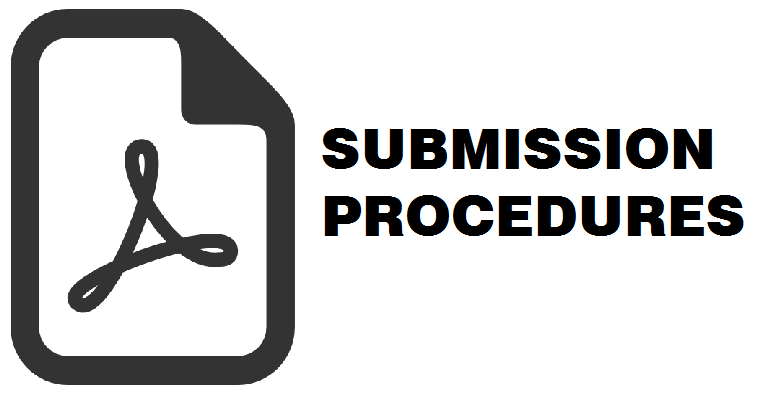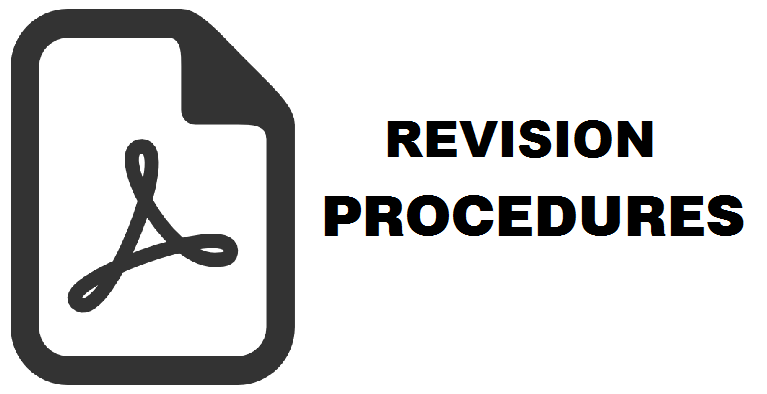Flood Risk Evacuation System in Tanjung Mas, Semarang City
Grandy Loranessa Wungo(1*), Santy Paulla Dewi(2), Mussadun Mussadun(3)
(1) Faculty of Engineering, Universitas Diponegoro, Semarang, Indonesia
(2) Faculty of Engineering, Universitas Diponegoro, Semarang, Indonesia
(3) Faculty of Engineering, Universitas Diponegoro, Semarang, Indonesia
(*) Corresponding Author
Abstract
Rapid urbanization has significantly contributed to environmental degradation, particularly in coastal cities. In Semarang’s Tanjung Mas Village, frequent coastal flooding is a pressing issue, driven by rising sea levels, land subsidence, and inadequate drainage infrastructure. Therefore, this study aims to identify coastal flood hazards in Tanjung Mas and evaluate the efficiency of evacuation routes to improve disaster response strategies. Using GIS-based spatial analysis, flood modeling, and network analysis, high-risk zones, and proposed optimized evacuation pathways are identified. In line with these results, the northern and central sections of Tanjung Mas are the most vulnerable, with densely populated residential and industrial areas at the highest risk. A comparison with Seocho and Gangnam District, South Korea, and Mueang Nakhon Si Thammarat District, Thailand, highlights key differences and similarities. In South Korea and Thailand, the proposed evacuation routes have not adequately considered human behavioral factors. In contrast, a GIS-based specifically tailored to Tanjung Mas, integrating real-time flood updates and optimized route mapping to improve evacuation strategies is proposed. By drawing insights from international case studies, this study contributes to developing adaptive flood evacuation systems applicable to other coastal cities facing similar challenges. These results emphasize the importance of integrating real-time data and community-based planning to enhance disaster resilience and response strategies in urban coastal environments. The approach delivers a novel approach to combining disaster preparedness analysis and flood modeling in the results of a proposed evacuation route in the industrial coastal area.
Received: 2024-07-19 Revised: 2024-08-20 Accepted: 2025-03-26 Published: 2025-04-28
Keywords
References
Abid, S. K., Sulaiman, N., Al-Wathinani, A. M., & Goniewicz, K. (2024). Community-based Flood Mitigation in Malaysia: Enhancing Public Participation and Policy Effectiveness for Sustainable Resilience. Journal of Global Health, 14(04290). https://doi.org/10.7189/jogh.14.04290
Abidin, H. Z., Andreas, H., Gumilar, I., Sidiq, T. P., & Fukuda, Y. (2013). Land subsidence in coastal city of Semarang (Indonesia): characteristics, impacts and causes. Geomatics, Natural Hazards and Risk, 4(3), 226–240. https://doi.org/10.1080/19475705.2012.692336
Andreas, H., Zainal Abidin, H., Gumilar, I., Purnama Sidiq, T., Anggreni Sarsito, D., & Pradipta, D. (2019). On the acceleration of land subsidence rate in Semarang City as detected from GPS surveys. E3S Web of Conferences, 94. https://doi.org/10.1051/e3sconf/20199404002
Bivina, G. R., Gupta, A., & Parida, M. (2020). Walk Accessibility to Metro Stations: An analysis based on Meso- or Micro-scale Built Environment Factors. Sustainable Cities and Society, 55(November 2018), 102047. https://doi.org/10.1016/j.scs.2020.102047
BMKG Tanjung Mas. (2022). Curah Hujan Tahun 2017 - 2022. Semarang.
Bott, L. M., Schöne, T., Illigner, J., Haghshenas Haghighi, M., Gisevius, K., & Braun, B. (2021). Land subsidence in Jakarta and Semarang Bay – The relationship between physical processes, risk perception, and household adaptation. Ocean and Coastal Management, 211. https://doi.org/10.1016/j.ocecoaman.2021.105775
Eisenberg-Guyot, J., Moudon, A. V., Hurvitz, P. M., Mooney, S. J., Whitlock, K. B., & Saelens, B. E. (2019). Beyond the bus stop: Where transit users walk. Journal of Transport & Health, 14(August), 100604. https://doi.org/10.1016/j.jth.2019.100604
GLOSS. (2022). Sea Level in 2022. Retrieved December 6, 2022, from https://gloss-sealevel.org/real-time-data-delivery
Irawan, A. M., Marfai, M. A., Nugraheni, I. R., Gustono, S. T., Rejeki, H. A., Widodo, A., ... & Faridatunnisa, M. (2021). Comparison between averaged and localised subsidence measurements for coastal floods projection in 2050 Semarang, Indonesia. Urban Climate, 35(100760).
Istiqomah, L. N., Sabri, L. ., & Sudarsono, B. (2020). Analisis Penurunan Muka Tanah Kota Semarang Metode Survei GNSS Tahun 2019. Jurnal Geodesi Undip, 4(April), 86–94.
Jeong, D., Kim, M., Song, K., & Lee, J. (2021). Planning a Green Infrastructure Network to Integrate Potential Evacuation Routes and the Urban Green Space in a Coastal City: The Case Study of Haeundae District, Busan, South Korea. Science of the Total Environment, 761(143179). https://doi.org/10.1016/j.scitotenv.2020.143179
Kaiser, G., Scheele, L., Kortenhaus, A., Løvholt, F., Römer, H., & Leschka, S. (2011). The influence of land cover roughness on the results of high resolution tsunami inundation modeling. Natural Hazards and Earth System Science, 11(9), 2521–2540. https://doi.org/10.5194/nhess-11-2521-2011
Lee, Y. H., Keum, H. J., Han, K. Y., & Hong, W. H. (2020). A Hierarchical Flood Shelter Location Model for Walking Evacuation Planning. Environmental Hazards, 20(4), 432–455. https://doi.org/10.1080/17477891.2020.1840327
M.N, T. T. T. U., Takatoshi, A., Kentaro, H., & Kotaro, I. (2023). A Safety Level Evaluation Model based on Network Analysis: Enhancing Accessibility & Evacuation Safety in Ho Chi Minh City’s Alleyways. Journal of Asian Architecture and Building Engineering, 22(2), 740–764. https://doi.org/10.1080/13467581.2022.2050378
Mitchell, M., Hendricks, J., & Schatt, D. (2023). Road Network Analyses Elucidate Hidden Road Flooding Impacts Under Accelerating Sea Level Rise. Frontiers in Environmental Science, 11(1083282), 1–9. https://doi.org/10.3389/fenvs.2023.1083282
Monika, P., Ruchjana, B. N., & Abdullah, A. S. (2022). GSTARI-X-ARCH Model with Data Mining Approach for Forecasting Climate in West Java. Computation, 10(12). https://doi.org/10.3390/computation10120204
Ngurah, G., Dharmayasa, P., Simatupang, C. A., & Sinaga, D. M. (2022). NASA Power’s: an alternative rainfall data resources for hydrology research and planning activities in Bali Island, Indonesia. Journal of Infrastructure Planning and Engineering, 1(1), 1–7. Retrieved from https://doi.org/10.22225/jipe.1.1.2022.1-7
Parajuli, G., Neupane, S., Kunwar, S., Adhikari, R., & Acharya, T. D. (2023). A GIS-Based Evacuation Route Planning in Flood-Susceptible Area of Siraha Municipality, Nepal. ISPRS International Journal of Geo-Information, 12(7). https://doi.org/10.3390/ijgi12070286
Park, S. J., & Lee, D. K. (2020). Prediction of coastal flooding risk under climate change impacts in South Korea using machine learning algorithms. Environmental Research Letters, 15(9). https://doi.org/10.1088/1748-9326/aba5b3
Park, S., Sohn, W., Piao, Y., & Lee, D. (2023). Adaptation strategies for future coastal flooding: Performance evaluation of green and grey infrastructure in South Korea. Journal of Environmental Management, 334(January), 117495. https://doi.org/10.1016/j.jenvman.2023.117495
POWER NASA. (2022). Daily Precipitation in 2004 - 2016. Retrieved December 6, 2022, from https://power.larc.nasa.gov/data-access-viewer/
Pratama, M. B. (2019). Tidal flood in Pekalongan: Utilizing and operating open resources for modelling. Materials Science and Engineering, 012029. IOP Publishing.
Pueboobpaphan, R., Pueboobpaphan, S., & Sukhotra, S. (2022). Acceptable walking distance to transit stations in Bangkok, Thailand: Application of a stated preference technique. Journal of Transport Geography, 99(January), 103296. https://doi.org/10.1016/j.jtrangeo.2022.103296
Rong, Y., Zhang, T., Zheng, Y., Hu, C., Peng, L., & Feng, P. (2020). Three-dimensional urban flood inundation simulation based on digital aerial photogrammetry. Journal of Hydrology, 584(July 2019), 124308. https://doi.org/10.1016/j.jhydrol.2019.124308
Santoso, B. (2022). BNPB: Semarang Banjir Rob Karena Tanggul Jebol Tak Kuat Menahan Air Laut. Retrieved from Suara.com website: https://www.suara.com/news/2022/05/24/100409/bnpb-semarang-banjir-rob-karena-tanggul-jebol-tak-kuat-menahan-air-laut
Suwanno, P., Yaibok, C., Pornbunyanon, T., Kanjanakul, C., Buathongkhue, C., Tsumita, N., & Fukuda, A. (2023). GIS-based Identification and Analysis of Suitable Evacuation Areas and Routes in Flood-Prone Zones of Nakhon Si Thammarat Municipality. IATSS Research, 47(3), 416–431. https://doi.org/10.1016/j.iatssr.2023.08.004
Trinh, M. X., & Molkenthin, F. (2021). Flood hazard mapping for data-scarce and ungauged coastal river basins using advanced hydrodynamic models, high temporal-spatial resolution remote sensing precipitation data, and satellite imageries. Natural Hazards, 109(1), 441–469. https://doi.org/10.1007/s11069-021-04843-1
UNDRR. (2021). International Cooperation in Disaster Risk Reduction. In United Nations Office for Disaster Risk Reduction.
Wang, J., Yi, S., Li, M., Wang, L., & Song, C. (2018). Effects of sea level rise, land subsidence, bathymetric change and typhoon tracks on storm flooding in the coastal areas of Shanghai. Science of the Total Environment, 621, 228–234. https://doi.org/10.1016/j.scitotenv.2017.11.224
Zhong, G., Liu, S., Han, C., & Huang, W. (2014). Urban flood maping for Jiaxing city based on hydrodynamic modeling and GIS analysis. Journal of Coastal Research, 68(10068), 168–175.
Article Metrics
Refbacks
- There are currently no refbacks.
Copyright (c) 2025 Authors and Indonesian Journal of Geography

This work is licensed under a Creative Commons Attribution-NonCommercial 4.0 International License.
Accredited Journal, Based on Decree of the Minister of Research, Technology and Higher Education, Republic of Indonesia Number 225/E/KPT/2022, Vol 54 No 1 the Year 2022 - Vol 58 No 2 the Year 2026 (accreditation certificate download)
ISSN 2354-9114 (online), ISSN 0024-9521 (print)









